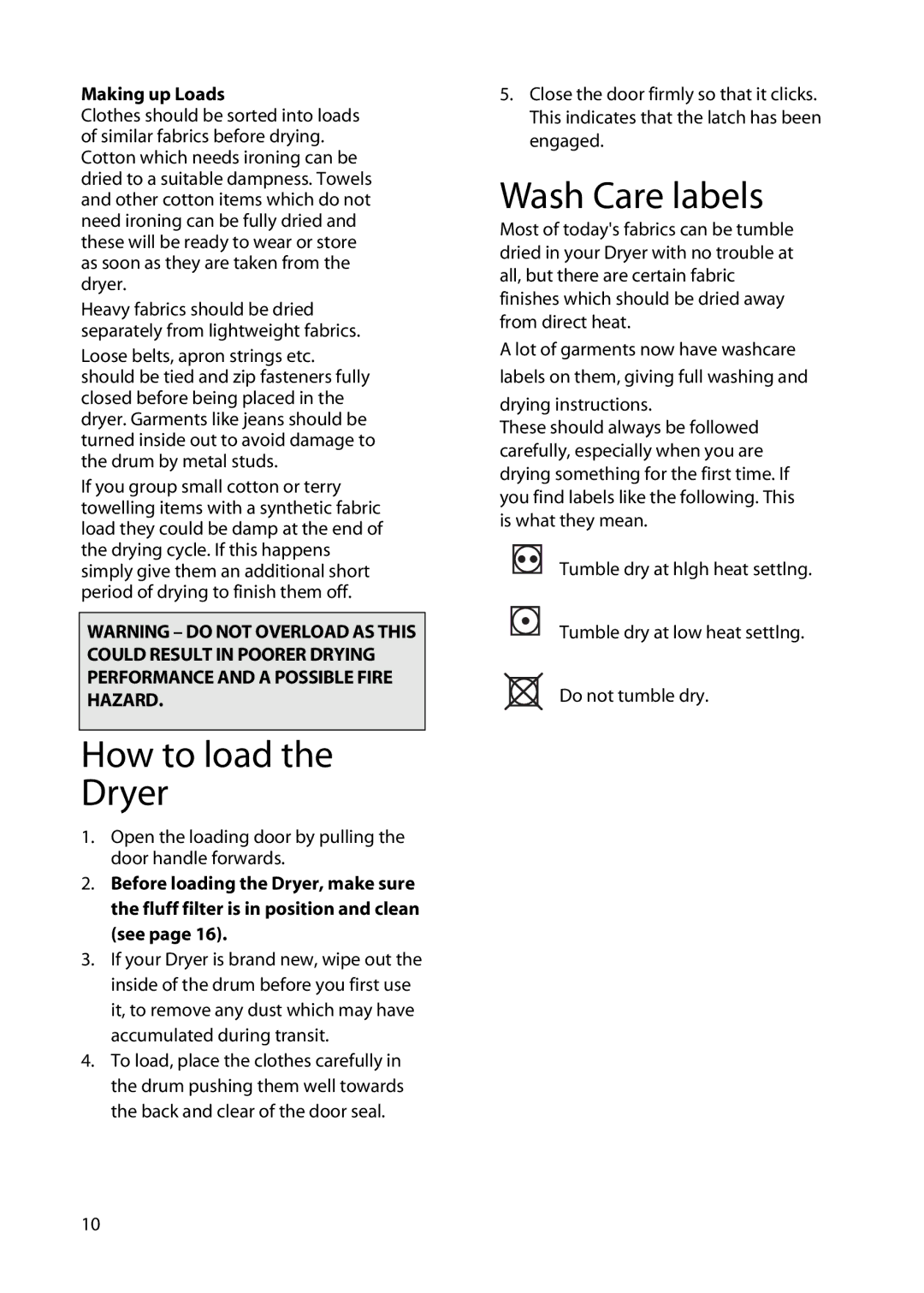
Making up Loads
Clothes should be sorted into loads of similar fabrics before drying. Cotton which needs ironing can be dried to a suitable dampness. Towels and other cotton items which do not need ironing can be fully dried and these will be ready to wear or store as soon as they are taken from the dryer.
Heavy fabrics should be dried separately from lightweight fabrics.
Loose belts, apron strings etc. should be tied and zip fasteners fully closed before being placed in the dryer. Garments like jeans should be turned inside out to avoid damage to the drum by metal studs.
If you group small cotton or terry towelling items with a synthetic fabric load they could be damp at the end of the drying cycle. If this happens simply give them an additional short period of drying to finish them off.
WARNING – DO NOT OVERLOAD AS THIS COULD RESULT IN POORER DRYING PERFORMANCE AND A POSSIBLE FIRE HAZARD.
How to load the
Dryer
1.Open the loading door by pulling the door handle forwards.
2.Before loading the Dryer, make sure the fluff filter is in position and clean (see page 16).
3.If your Dryer is brand new, wipe out the inside of the drum before you first use it, to remove any dust which may have accumulated during transit.
4.To load, place the clothes carefully in the drum pushing them well towards the back and clear of the door seal.
5.Close the door firmly so that it clicks. This indicates that the latch has been engaged.
Wash Care labels
Most of today's fabrics can be tumble dried in your Dryer with no trouble at all, but there are certain fabric finishes which should be dried away from direct heat.
A lot of garments now have washcare
labels on them, giving full washing and
drying instructions.
These should always be followed carefully, especially when you are drying something for the first time. If you find labels like the following. This is what they mean.
Tumble dry at hlgh heat settlng.
Tumble dry at low heat settlng.
Do not tumble dry.
10
